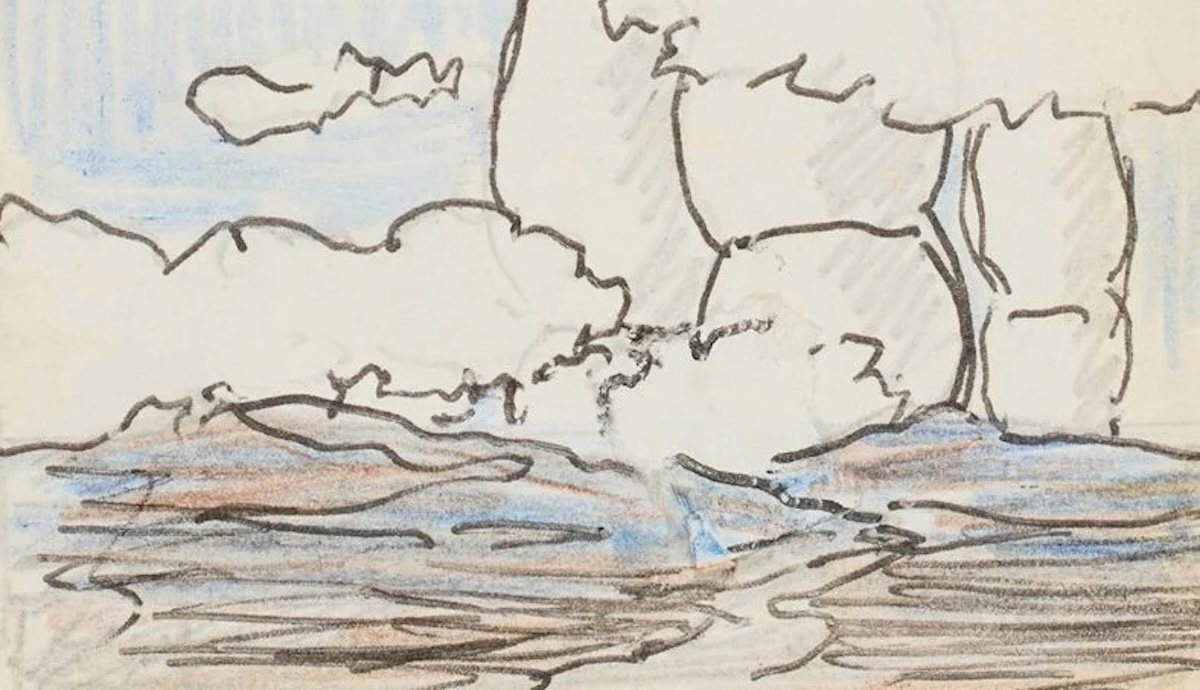
A previously unknown and strikingly asymmetrical portrait bearing the name “Picasso” hung in an Italian family’s home for decades. Recently, a team of experts said it was actually painted by Pablo Picasso himself—and that it might be worth millions.
A Junk Dealer Found the Painting in 1962

Andrea Lo Rosso was growing increasingly curious about a strange portrait in his family home in Italy. His parents had argued about the painting for as many decades as it had been hanging on the wall. Andrea’s father, Luigi Lo Rosso, found the rolled-up canvas in the cellar of a villa in Capri in 1962. He brought it home, placed it in a cheap frame, and presented it to his wife.
Luigi Lo Rosso, who died in 2021, “would collect junk to sell for next to nothing,” Andrea Lo Rosso told the Guardian. “He found the painting before I was even born and didn’t have a clue who Picasso was. He wasn’t a very cultured person.” Lo Rosso added, “My mother didn’t want to keep it—she kept saying it was horrible.”
Could the Alleged Picasso Painting Fetch Millions?

Sixty years after Luigi found the painting, the Lo Rosso family finally brought it to the Arcadia Foundation, which specializes in art appraisals and attributions. Dr. Cinzia Altieri, a trained handwriting expert and member of the foundation’s scientific committee, studied the signature of the Lo Rosso family’s purported Picasso painting. The well-known Italian art detective Maurizio Seracini also got involved, leading a chemical-scientific analysis of the work.
The Arcadia Foundation confirmed the attribution of the painting to Picasso. They believe the portrait was made sometime between 1930 and 1936 during a trip to Capri, where Picasso often visited, and that it depicts his then-lover, the French artist Dora Maar. The foundation also valued the alleged Picasso painting at €6 million ($6.7 million). However, the portrait is unlikely to fetch seven figures until it has been recognized by official Picasso authenticators. Andrea Lo Rosso reported that the Picasso Foundation in Spain has thus far refused to assess the work, which it believes is a fake.
Who Was Dora Maar?

Henriette Theodora Markovitch (1907-1997), known as Dora Maar, was a French Surrealist artist and antifascist activist. Maar’s photography, photomontages, paintings, and poetry contributed daring, dreamlike imagery to the male-dominated Surrealist movement. She signed several Surrealist manifestos, photographed the movement’s leading participants, and was one of the very few women invited to exhibit work in Surrealist group exhibitions.
Maar met Pablo Picasso in late 1935 or early 1936. She was his muse and mistress for nearly a decade, modeling for Picasso’s famous Weeping Woman series, as well as several famous portraits. The auction record for a Picasso painting of Maar was set in 2006 when Dora Maar au chat (1941) sold for $95.2 million at Sotheby’s New York. While Maar’s own creativity has often since been overshadowed by her relationship with Picasso, her work has recently begun getting the attention it deserves.









